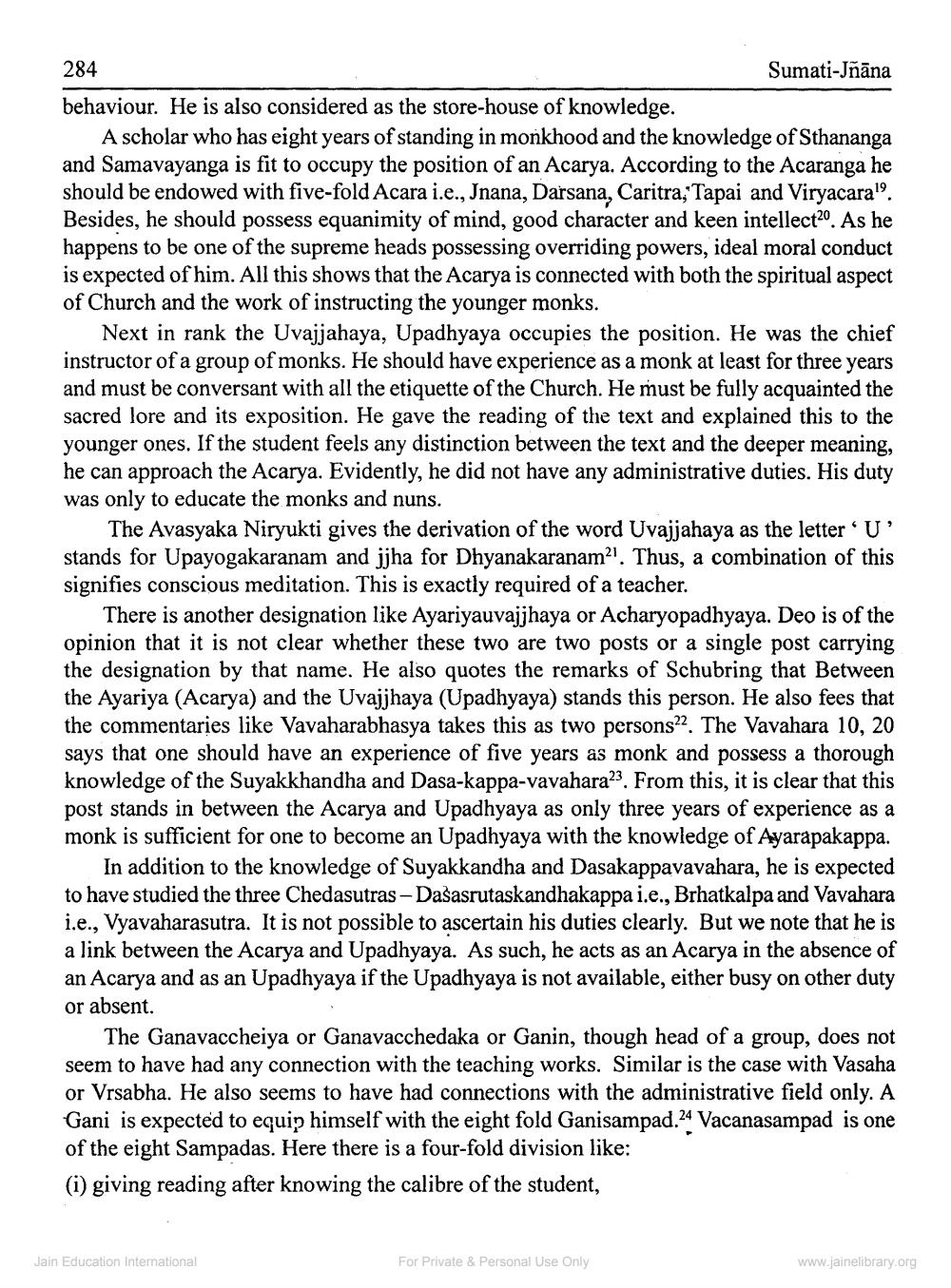________________
284
behaviour. He is also considered as the store-house of knowledge.
A scholar who has eight years of standing in monkhood and the knowledge of Sthananga and Samavayanga is fit to occupy the position of an Acarya. According to the Acaranga he should be endowed with five-fold Acara i.e., Jnana, Darsana, Caritra, Tapai and Viryacara1. Besides, he should possess equanimity of mind, good character and keen intellect20. As he happens to be one of the supreme heads possessing overriding powers, ideal moral conduct is expected of him. All this shows that the Acarya is connected with both the spiritual aspect of Church and the work of instructing the younger monks.
Sumati-Jñāna
Next in rank the Uvajjahaya, Upadhyaya occupies the position. He was the chief instructor of a group of monks. He should have experience as a monk at least for three years and must be conversant with all the etiquette of the Church. He must be fully acquainted the sacred lore and its exposition. He gave the reading of the text and explained this to the younger ones. If the student feels any distinction between the text and the deeper meaning, he can approach the Acarya. Evidently, he did not have any administrative duties. His duty was only to educate the monks and nuns.
The Avasyaka Niryukti gives the derivation of the word Uvajjahaya as the letter' U' stands for Upayogakaranam and jjha for Dhyanakaranam2. Thus, a combination of this signifies conscious meditation. This is exactly required of a teacher.
There is another designation like Ayariyauvajjhaya or Acharyopadhyaya. Deo is of the opinion that it is not clear whether these two are two posts or a single post carrying the designation by that name. He also quotes the remarks of Schubring that Between the Ayariya (Acarya) and the Uvajjhaya (Upadhyaya) stands this person. He also fees that the commentaries like Vavaharabhasya takes this as two persons22. The Vavahara 10, 20 says that one should have an experience of five years as monk and possess a thorough knowledge of the Suyakkhandha and Dasa-kappa-vavahara23. From this, it is clear that this post stands in between the Acarya and Upadhyaya as only three years of experience as a monk is sufficient for one to become an Upadhyaya with the knowledge of Ayarapakappa.
In addition to the knowledge of Suyakkandha and Dasakappavavahara, he is expected to have studied the three Chedasutras - Dašasrutaskandhakappa i.e., Brhatkalpa and Vavahara i.e., Vyavaharasutra. It is not possible to ascertain his duties clearly. But we note that he is a link between the Acarya and Upadhyaya. As such, he acts as an Acarya in the absence of an Acarya and as an Upadhyaya if the Upadhyaya is not available, either busy on other duty or absent.
The Ganavaccheiya or Ganavacchedaka or Ganin, though head of a group, does not seem to have had any connection with the teaching works. Similar is the case with Vasaha or Vrsabha. He also seems to have had connections with the administrative field only. A Gani is expected to equip himself with the eight fold Ganisampad.24 Vacanasampad is one of the eight Sampadas. Here there is a four-fold division like:
(i) giving reading after knowing the calibre of the student,
Jain Education International
For Private & Personal Use Only
www.jainelibrary.org




